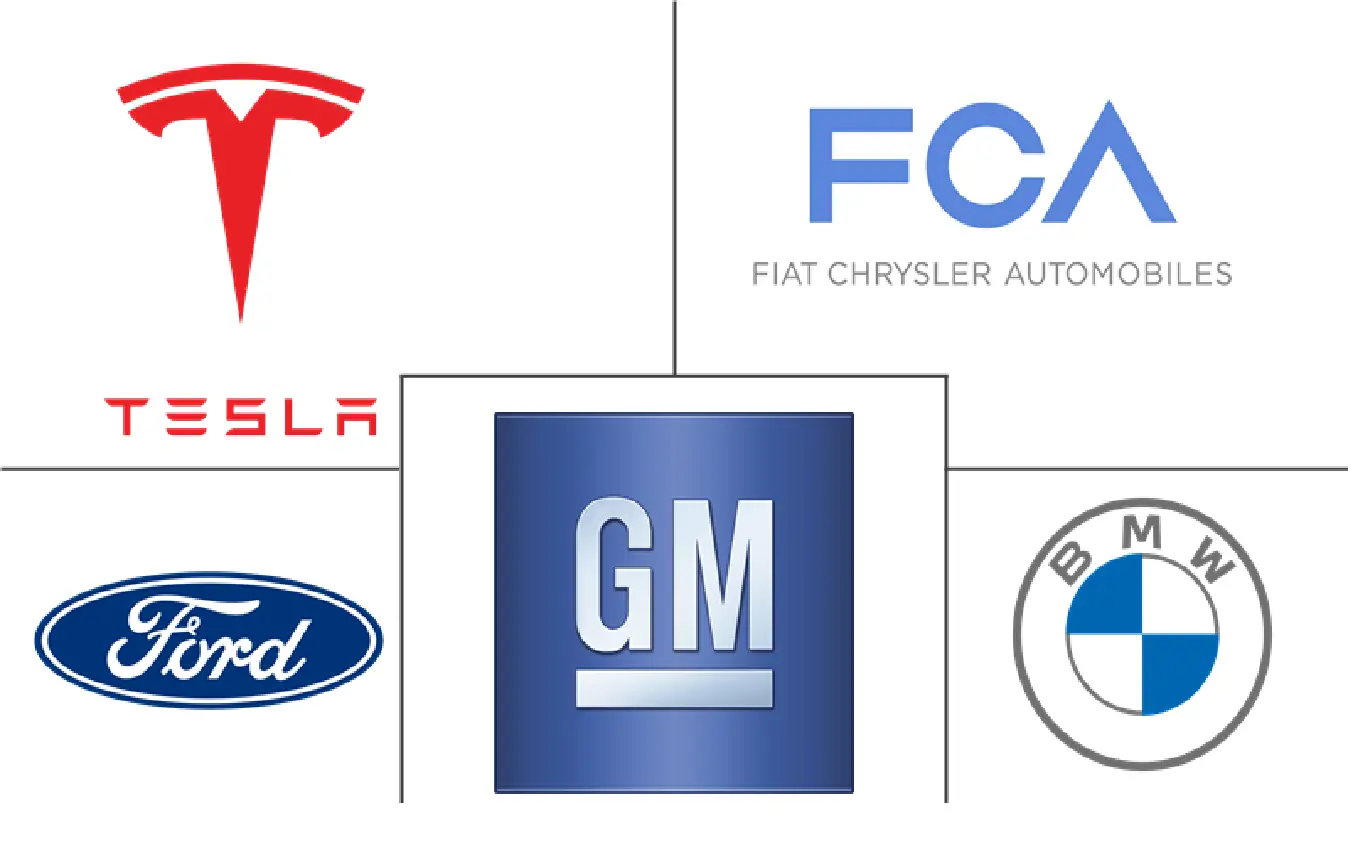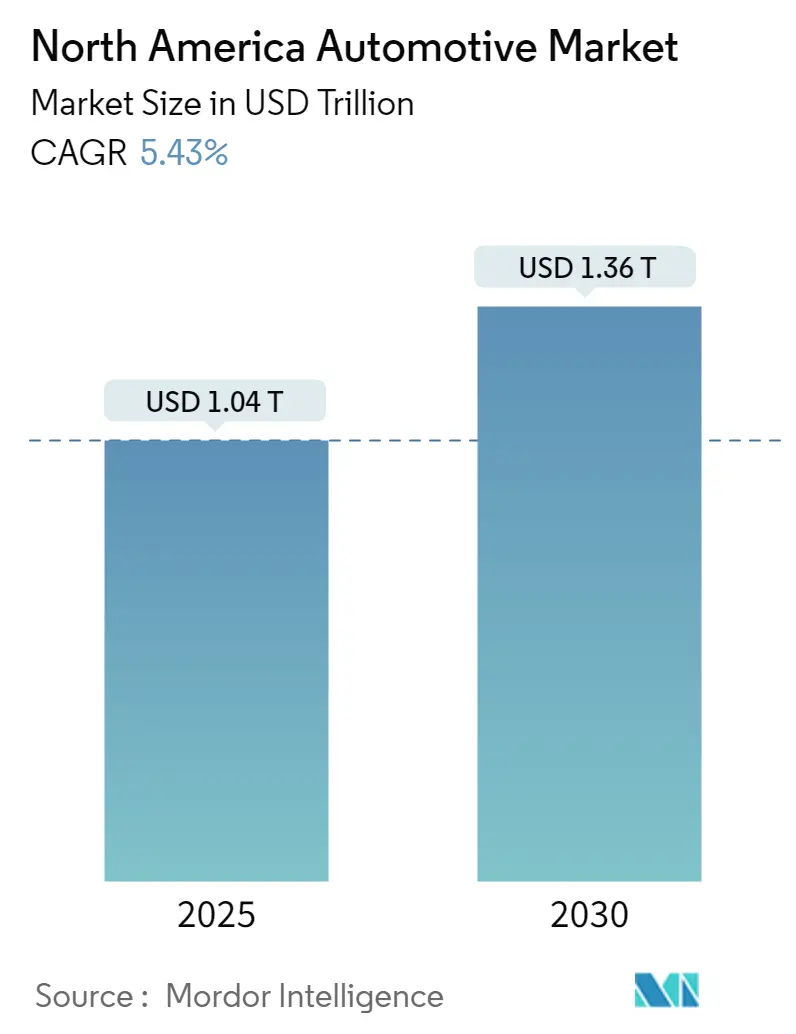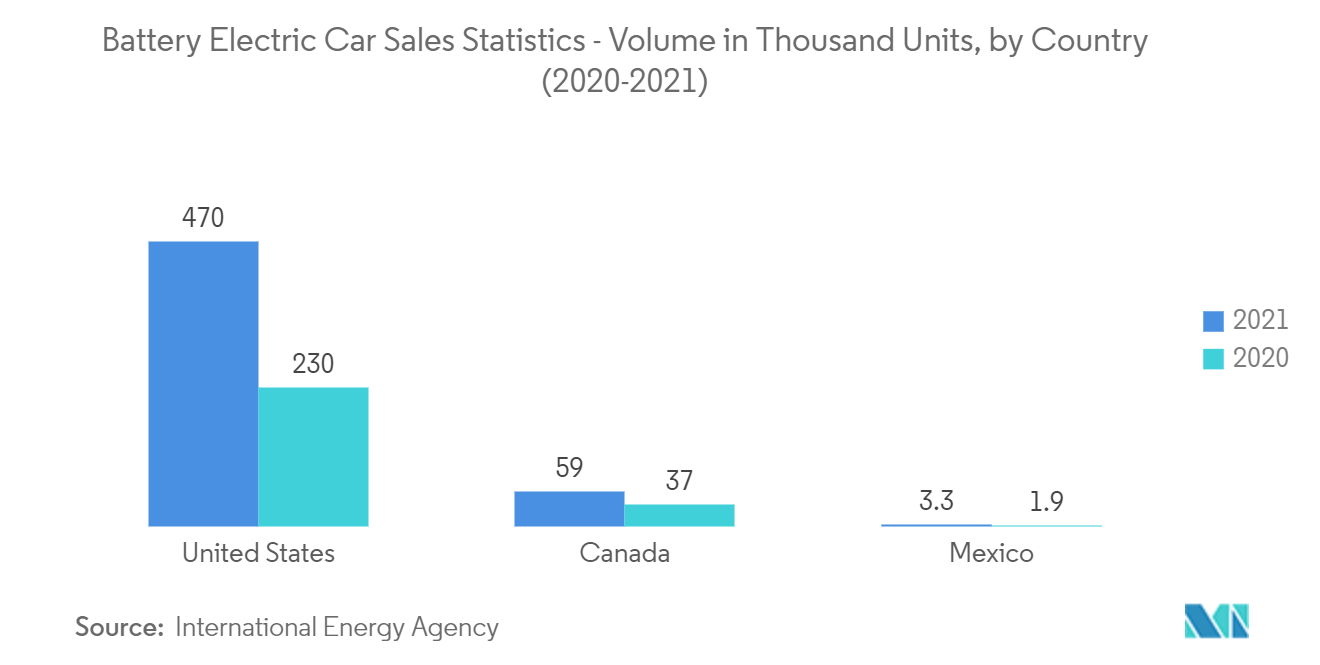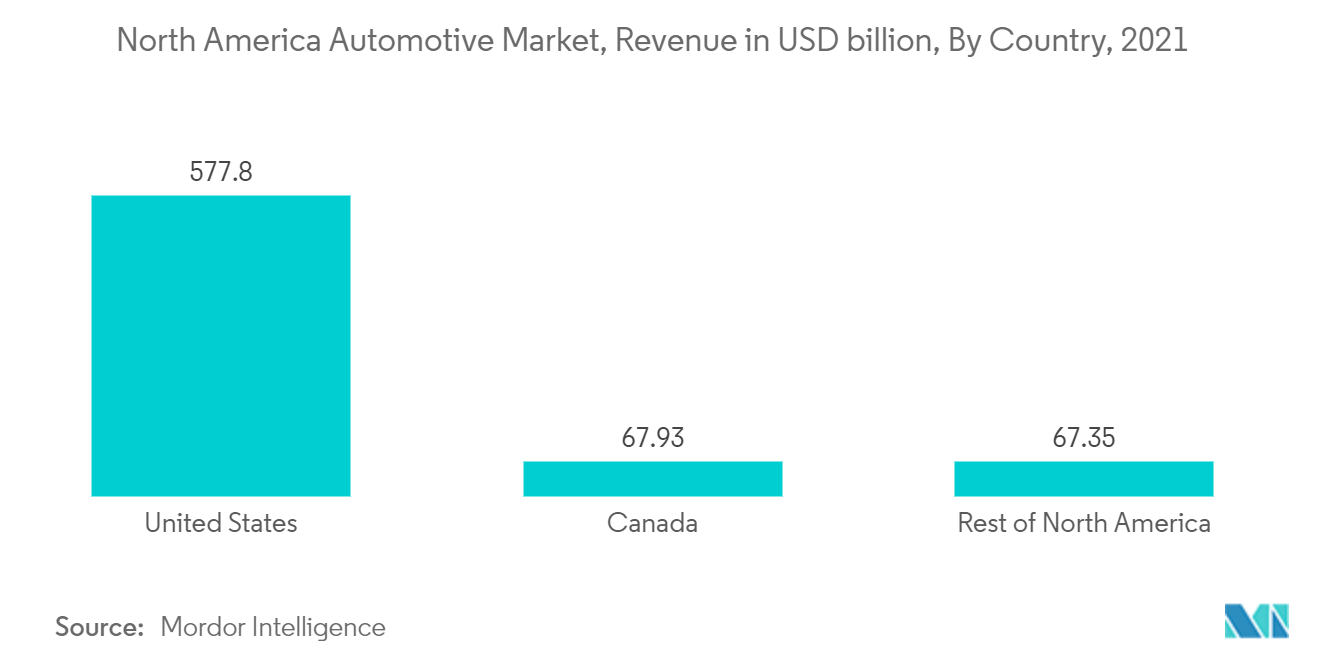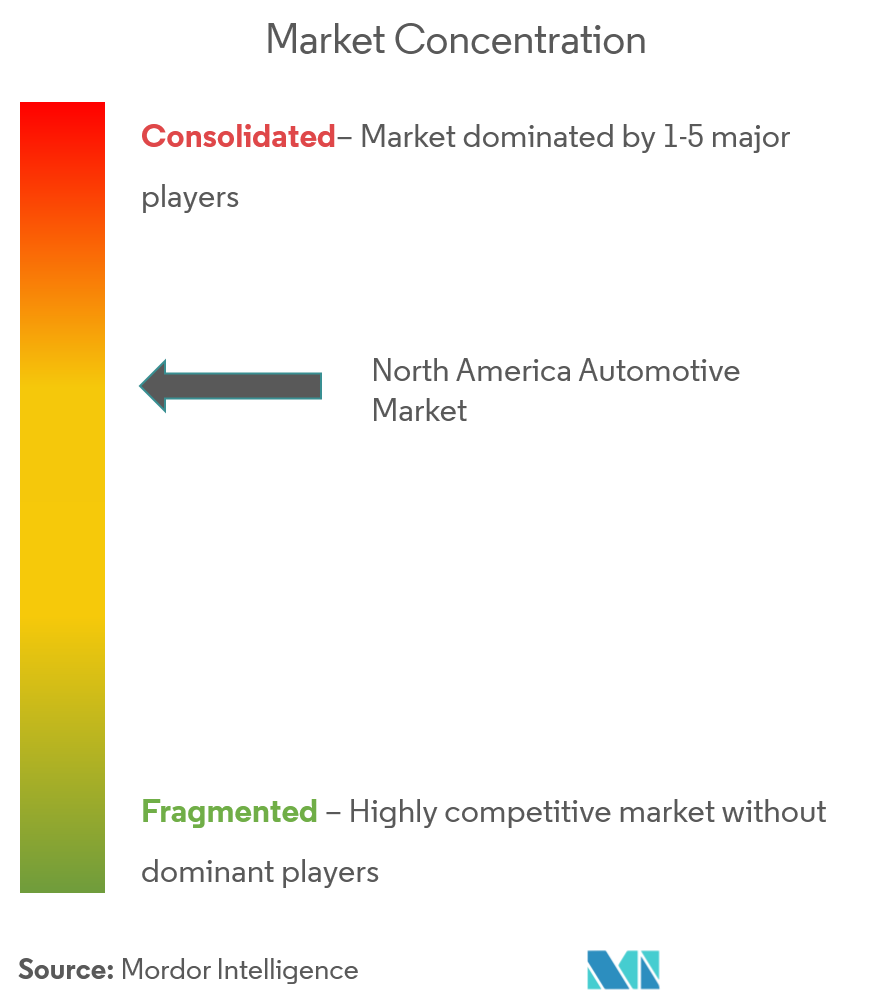North America Automotive Market Analysis
The North America Automotive Market size is estimated at USD 1.04 trillion in 2025, and is expected to reach USD 1.36 trillion by 2030, at a CAGR of 5.43% during the forecast period (2025-2030).
The COVID-19 pandemic had a significantly negative impact on the market during the first half of 2020 due to lockdowns and shutdowns of manufacturing units. The market also faced difficulties across the supply chain as the sources of raw materials and components were located at varied locations. However, as restrictions eased, demand started restoring back to pre-pandemic levels, with the majority of it being supported by key players and their active presence in the market in the form of new model launches and plant expansions.
Over the medium term, demand in the market is expected to be driven by rising electric mobility across major countries in the North American region. In addition, growing government support in the form of favorable initiatives and policies is expected to drive demand in the market. The growing consumer inclination toward safety and comfort features in vehicles is accommodated by the latest technologies like ADAS.
However, growing adoption of rental and used cars may hinder the players operating in the market. The demand for commercial vehicles is strongly influenced by growing logistics and delivery services, coupled with the fleet expansion of vehicles by key e-commerce gaints like Amazon. The developments in engine technology are progressing significantly, accompanying the rising emission standards across the world. These factors are likely to boost the growth of the automotive market in the region.
The United States is expected to hold significant market share in the region, followed by Canada and Mexico. The country is home to major automotive OEMS and is influenced positively by large supportive infrastructure and electric vehicle policies of the US government. Growing inclination of youth toward luxury and premium vehicles is also expected to offer lucrative opportunities to the market.
North America Automotive Market Trends
Rising Electric Mobility to Drive Demand in the Market
The increasing focus on reducing vehicular emissions has shifted the attention of the automotive industry toward electric vehicles, which are driving the market. With the growing environmental concerns, governments and environmental agencies are enacting stringent emission norms and laws that may increase the manufacturing cost of electric drive trains and fuel-efficient diesel engines in the coming years. North America has witnessed an unprecedented demand for battery-electric vehicles over the last five years. For instance,
- In the United States, sales of new light-duty chargeable electric vehicles increased to 608,000 in 2021 as compared to 308,000 in 2020. Battery electric vehicles accounted for more than 73% of the total chargeable electric vehicles sold in the country.
- Though the 2021 sales were flat compared to 2020, the growth rate since 2013 has been impressive. Although the global market declined in 2020 due to the COVID-19 pandemic, the BEVs segment has witnessed growth, and the long-term forecast of BEVs sales is optimistic.
Incentives and mandates are also boosting the demand for electric vehicles. Several incentives are being provided by the governments to encourage the sales of electric vehicles, as countries are focusing on reducing their vehicle emissions.
- The EPA and NHTSA proposed the implementation of the Safer Affordable Fuel-Efficient (SAFE) vehicles rules (2021 - 2026). These rules may set the standards for corporate average fuel economy and greenhouse gas emissions for passenger and light commercial vehicles.The Zero Emission Vehicles (ZEV) Program requires OEMs to sell specific numbers of clean and zero-emission vehicles (electric, hybrid, and fuel cell-powered commercial and passenger vehicles). The ZEV plan aims at putting 12 million ZEVs on the road by 2030.
Such developments are expected to boost the automotive market in North America over the forecast period.
The United States Likely to Occupy Significant Share in the Market
The United States is one of the major automotive industries in the world, which contributes at least 3% to the overall gross domestic product (GDP) of the country. The country manufactured close to 8.82 million vehicles in 2020, which is about 19% less than the previous year, 2019. This decline in manufacturing was mainly due to the COVID-19 pandemic and changes in the supply chains of the automobile industry.
- As of June 2020, approximately 250 million cars, trucks, and buses in the United States were powered by internal combustion engines using gasoline or diesel fuel. With the emergence of electric vehicles, the US government has been providing various tax benefits to support the purchase of electric vehicles.
- The credit for plug-in electric vehicles is a federal tax incentive for electric vehicles, where the credit ranges from USD 2,500 to USD 7,500 per vehicle, depending on the vehicle's battery capacity. This type of credit is available after the sale of 200,000 qualifying vehicles in the United States.
The government is also supporting the R&D of electric vehicles in the form of annual appropriations to the Office of Energy Efficiency and Renewable Energy (EERE). The United States is witnessing enormous demand for electric vehicles, which is majorly catered to by the Tier-1 companies. For instance, Tesla accounts for a major share of the market. Tesla Model 3, Tesla Model X, and Tesla Model S accounted for 57% of the sales, and Chevy Bolt and Nissan LEAF together accounted for 9% of sales.
The government is supporting electrification through programs and incentives like the FTA's Low or No-emission Vehicle Program and the California Hybrid and Zero-Emission Truck and Bus Voucher Incentive Project that help agencies purchase advanced technology transit buses.
North America Automotive Industry Overview
The North American automotive market is consolidated in nature and accommodates several key players such as Ford, Toyota, General Motors, Mazda, Honda, Volkswagen, and others. Several Tier 1, 2, and 3 companies have seen new opportunities in supplying components to these OEMs and simultaneously reducing overall costs. Key companies operating in the market are focusing on different growth strategies to stabilize their position in the market. For instance,
- August 2022: General Motors signed three new sourcing agreements for electric vehicle battery materials, which may help the automaker meet its goal of producing one million electric vehicles per year. The multi-year agreements with LG Chem, POSCO Chemical, and Livent will supply GM with critical materials such as lithium, nickel, cobalt, and cathode active material (CAM)
- August 2022: Ford secured several new raw material suppliers for its electric vehicle batteries, warning that a lack of supply could stymie the automaker's EV ambitions. The company signed agreements with lithium, graphite, cobalt, and nickel suppliers worldwide. Ford also entered new or expanded agreements with mining, processing, and manufacturing firms in North America, Asia, and South America.
North America Automotive Market Leaders
-
General Motors
-
Ford Motor Company
-
BMW AG
-
Tesla Inc.
-
Stellantis NV
- *Disclaimer: Major Players sorted in no particular order
North America Automotive Market News
- July 2022: Cadillac unveiled the Celestiq show car, a vision of innovation that previews the brand's future handcrafted and all-electric flagship sedan. The Ultium-based electric show car previews some of the materials, innovative technologies, and hand-crafted attention to detail harnessed to express Cadillac's vision for the future.
- July 2022: Amazon began deploying its custom electric delivery vehicles from Rivian for package delivery, with the electric vehicles hitting the road in Baltimore, Chicago, Dallas, Kansas City, Nashville, Phoenix, San Diego, Seattle, and St. Louis, among other cities.
- January 2022: Tesla Inc. had a supply agreement with Talon Metals Corp., a subsidiary of Talon Nickel LLC, for the supply of nickel. This agreement will lead to the production of battery material from mine to battery cathode in order to make the electric vehicle battery more eco-friendly.
North America Automotive Industry Segmentation
The North American automotive industry outlook covers the growing demand for passenger cars, commercial vehicles, and two-wheelers in the region, investments made by OEMs to establish their presence in North America, emission regulations, developments in the electric vehicle market, and market shares of both OEMs and OES.
The North American automotive market is segmented by vehicle type (passenger cars, commercial vehicles (light commercial vehicles and medium and heavy commercial vehicles), and two-wheelers) and geography (United States, Canada, and the Rest of North America).
| By Vehicle Type | Passenger Cars | ||
| Commercial Vehicles | Medium and Heavy Commercial Vehicles | ||
| Light Commercial Vehicles | |||
| Two-Wheelers | |||
| By Geography | United States | ||
| Canada | |||
| Rest of North America | |||
| Passenger Cars | |
| Commercial Vehicles | Medium and Heavy Commercial Vehicles |
| Light Commercial Vehicles | |
| Two-Wheelers |
| United States |
| Canada |
| Rest of North America |
North America Automotive Market Research FAQs
How big is the North America Automotive Market?
The North America Automotive Market size is expected to reach USD 1.04 trillion in 2025 and grow at a CAGR of 5.43% to reach USD 1.36 trillion by 2030.
What is the current North America Automotive Market size?
In 2025, the North America Automotive Market size is expected to reach USD 1.04 trillion.
Who are the key players in North America Automotive Market?
General Motors, Ford Motor Company, BMW AG, Tesla Inc. and Stellantis NV are the major companies operating in the North America Automotive Market.
What years does this North America Automotive Market cover, and what was the market size in 2024?
In 2024, the North America Automotive Market size was estimated at USD 0.98 trillion. The report covers the North America Automotive Market historical market size for years: 2019, 2020, 2021, 2022, 2023 and 2024. The report also forecasts the North America Automotive Market size for years: 2025, 2026, 2027, 2028, 2029 and 2030.
Page last updated on: November 11, 2024
US Automotive Industry Report
The North America Automotive Market is on a significant upswing, fueled by a surge in demand for electric and hybrid vehicles as the region aims for lower emissions and sustainable transport solutions. This market, encompassing passenger cars, commercial vehicles (split into light and medium & heavy categories), and two-wheelers, caters to diverse consumer needs across the United States, Canada, and beyond. The U.S. leads, propelled by electric vehicle adoption and supportive government policies. Key trends include a shift towards electric and autonomous vehicles and a persistent preference for trucks and SUVs, known for their versatility. The competitive landscape is marked by a variety of vehicle types and manufacturers, all contributing to market growth. This expansion is bolstered by a focus on sustainability, leading to more hybrid and electric vehicle options and a shift towards online sales and digital showrooms. For detailed insights, Mordor Intelligence™ offers a comprehensive analysis of the US Automotive market share, size, revenue growth rate, and a forecast outlook in a free report PDF download, encapsulating the dynamic growth and trends within the North America Automotive Market.
